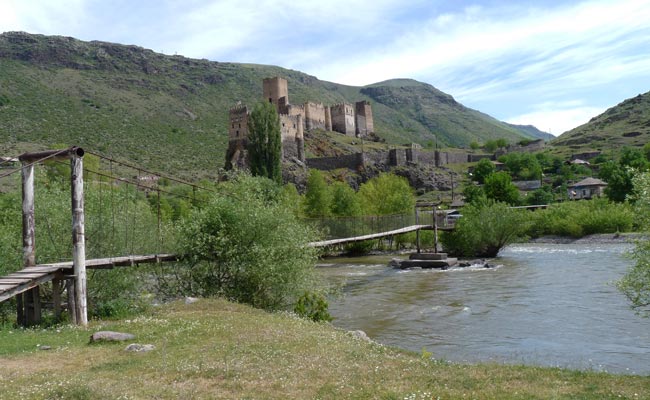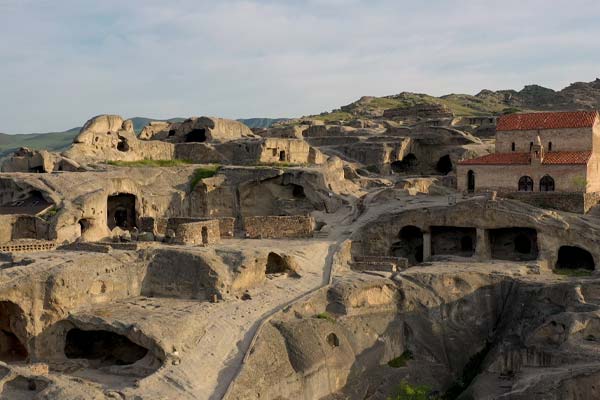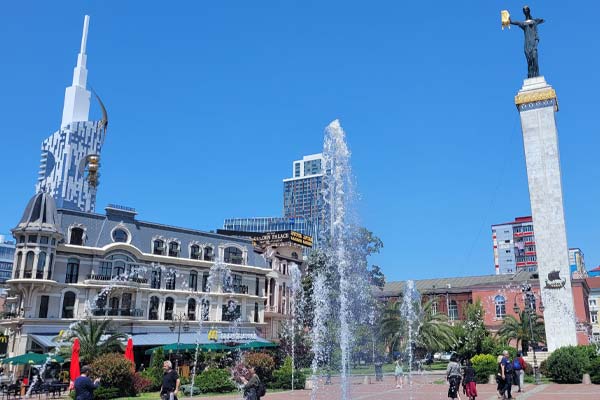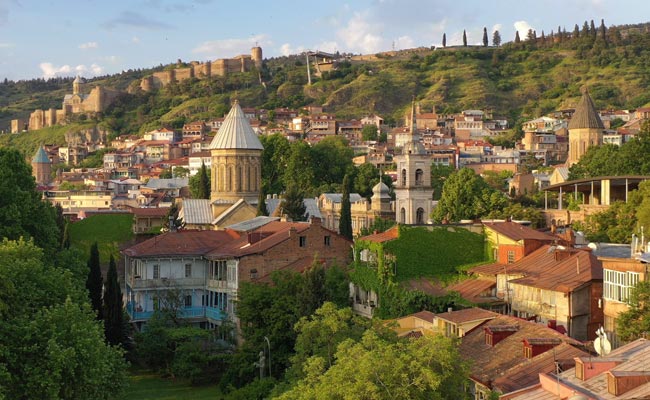|
Shida Kartli Shida Kartli, is part of the historic Kingdom of Kartli, also known as Iberia, and is historically the central region of the country. For centuries, Shida Kartli has played a very important political and economic role for Georgia, which is also underlined by the fact that it's also the region from which Georgia is named. The areas of the Shida Kartli Administrative Region were settled in the early Bronze Age due to their fertility and optimal climatic conditions. A central branch of the Silk Road also passed through the region, and several villages, towns and cultural centres were established here in pre-Christian times. As a result, Inner Carthage has a wide range of important historical and cultural monuments, from archaeological sites and hell cities to medieval castles, fortresses, monasteries and churches. The valleys of the Kura, Dzama and Ateni rivers, as well as the areas of the Lesser Caucasus, are ideal destinations for nature lovers. General info Area: 6,200 km2 (of which 4,807.7 km2 under Georgian control) Structure of administrative region Shida Kartli is divided into six municipalities, named after their administrative centres or cities: Gori, Kareli, Kaspi Khashuri, Dzhava and Tskhinvali. In addition, the region has two smaller cities/daba (urban-type settlements) and 366 villages. Cultural and natural highlights No other region in Georgia has as many cultural monuments as Shida Kartli. This is due to the fact that the region had a central geographical and later historical place in Georgia, and almost all communication routes from the Caspian Sea to the Black Sea passed through Shida Kartli, formerly the Kingdom of Kartli. Here is a small selection of important cultural monuments of the region: 1. Cave city of Uplisziche Shida Kartli also has a lot to offer in terms of scenery. Especially for those who are in the capital city of Tbilisi and want to make day trips into nature from there, the nearby region of Inner Kartlia is a very good destination. 1. Liakhvi nature reserve Cuisine and regional specialities Shida Kartli is situated at a relatively low altitude, the soil is fertile and there are numerous rivers, therefore agriculture, especially fruit and vegetable growing, is very common in the region and the cuisine is mainly dominated by vegetable soups and various salads. The most common ones are 1. Dock soup (Gholos Schechamandi) Juicy beef patties from Gori are very popular in Georgia. In the region of Shida Kartli there is a special bread made of flour, milk, butter, sultanas, cinnamon, etc. It is called Nazuqi, and anyone who has passed through the town of Surami will be familiar with this dessert, at least visually, as there are numerous bakeries along the roadside where Nazuqi is baked in wood-fired ovens. Special wines of the region Several endemic grape varieties grow in the interior of the region and are used to make dry white and red wines, as well as some sparkling or ice wines. Here are some of the most popular: 1. Goruli Mtsvane (The Green of Gori) - This grape makes very lively and cheerful white wines. 2. Chinebuli, also known as Chinuri (in English) - is often blended with Goruli Mtsvane to make a dry white wine. Chinuri grapes are also used to make sparkling wine. 3. Shavkapito - grows mainly in the interior of Cartagena and the grapes are used to make strong, full-bodied red wines. What is grown in the region Here is a short list of what is grown in the region: Barley, wheat, cabbage, tomatoes, cucumbers, peppers, aubergines, different types of apples and pears, different types of grapes, figs, peaches, plums, almonds, etc. Regional festivals Several popular festivals are celebrated in the interior of the country. The most widespread and well known are. 1. Atocoba - A folk festival held in the village of Atoci on the first weekend in October. On this day, people go to St George's Church in Atoci and pray for the seriously ill, especially the mentally ill. Several animals are sacrificed to the church and then a festive meal is shared with the priests and the community. 2. Gori-dzhvara, the feast is held in the church of Goridzhvari on St George's Day, twice a year. On 23 November and 6 May. During the feast a special liturgy is celebrated in the church in the name of St George, followed by a solemn meal with the priests and the community. 3. Kudianobis Ghame (Night of the Expulsion of Witches) - During the night, the branches of mirabelle plums and dog roses are cut, chopped and spread on a flat stone bowl, followed by hot embers. The bowl is taken to the field and the whole thing is scattered on the field. This drives away witches and protects the house from evil eyes. Historical overview The oldest human traces in the region, namely stone tools, date back to the Palaeolithic Age. In the Bronze Age, during the "Kura-Araxes culture", (about 3,400 BCE to 2,000 BCE), some areas of the region were already densely populated. For example, at Mount Grakliani, not far from today's Gori, more than 30,000 artefacts from various pre-Christian periods have been found, the oldest of which is a hand axe, estimated to be about 300,000 years old. In the 4th century, the kingdom of Kartli, also known as Iberia, was established in eastern Georgia. The kingdom consisted of three main areas: 1. Upper Kartli (included Samtskhe-Javakheti, as well as Tao-Klardjeti, now partly Turkey). The Kingdom of Kartli had political and economic relations with neighbouring kingdoms and empires, such as the Kingdom of Pontos, the Roman Empire, or the Early Persian Empire. As the Kingdom of Kartli was relatively small, it also lost independence in various wars and was in vassalage relationship with Rome and later with Persian Empire. It was only at the end of the 10th century, after Georgia was united, that Kartli also became part of the united Georgia and transferred the name to the whole country. (Georgia in Georgian is called Sakartvelo, land where Kartvelis live). In the 15th century, Georgia broke up into kingdoms and re-emerged as the Kingdom of Kartli with its main territories: Upper Kartli, Inner Kartli and Lower Kartli. In the 16th century, Kartli lost an important part, Upper Kartli, to the Ottomans and only Inner Kartli and Lower Kartli remained in the kingdom. In the 18th century, King Irakli II managed to unite Kartli with the neighbouring Georgian kingdom of Kakheti and the Kingdom of Kartli-Kakheti was formed. In 1801, the Kingdom of Kartli-Kakheti was annexed by Tsarist Russia and the present-day Inner Kartli region became part of the Tbilisi Governorate. At the beginning of the 20th century, before the October Revolution, one of the country's first educational and cultural institutions was opened in the region. A women's gymnasium was opened in Gori in 1900, followed by another school in Saguramo in 1909 and in Ateni in 1912. In the same years, the newspaper "Kartli" was founded and the theatre was opened in the town of Khashuri. In March 1921, a month after the Bolsheviks came to power, the first precursor of the kolkhoz was founded in Inner Kartlia under the name "New Life", which became the official Soviet kolkhoz in 1924. During the Soviet period, several factories were built in the region: Wool factory in Gori, cement factory in Kaspi, poultry factory near Gori, etc. Soon after Georgia's independence, in 1994, the administrative region of Shida Kartli was established by decree of the Georgian president, and now includes the territory of the breakaway region of "South Osseti". The region's main economic activities are agriculture and tourism. There are several wineries, fruit processing plants and juice presses. With a motorway and a main railway line passing through the region, there is also potential for industrial development.
On following trip, you will visit Shida Kartli
from 1,690 EUR
|






